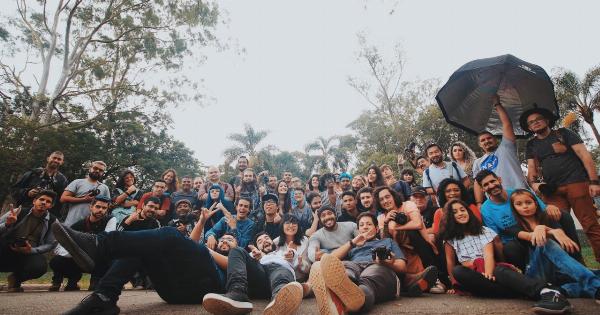Thanksgiving is an important holiday celebrated primarily in the United States and Canada. It originated as a harvest festival, and today it is a time for people to come together and express gratitude for the blessings in their lives.
But how did Thanksgiving become a national holiday? Let’s take a closer look at the history and significance of this beloved holiday.
The First Thanksgiving
The first Thanksgiving can be traced back to 1621 when the Pilgrims, who had recently settled in Plymouth, Massachusetts, celebrated a successful harvest.
They invited the local Native American tribe, the Wampanoag, to join them in a feast, which lasted for three days. This celebration is believed to be the origin of the modern-day Thanksgiving.
Thanksgiving Becomes a Tradition
Although the first Thanksgiving was a notable event, it did not immediately become an annual tradition. It wasn’t until several years later, in 1789, that George Washington proclaimed a national day of Thanksgiving.
However, this declaration did not establish Thanksgiving as a recurring holiday; it was meant to be a one-time observance.
In the following years, various states and regions continued to celebrate Thanksgiving, but there was no unified national celebration.
The idea of Thanksgiving as a recurring holiday gained popularity through the efforts of several influential individuals.
Sarah Josepha Hale’s Campaign
One of the most important figures in the establishment of Thanksgiving as a national holiday was Sarah Josepha Hale. Hale was a writer and editor known for her influence on American culture and literature.
She believed that Thanksgiving could help unite the country during a time of great turmoil.
In 1827, Hale began a campaign to make Thanksgiving a national holiday. She wrote numerous articles and letters to politicians, urging them to support the idea.
Hale’s efforts finally paid off when, in 1863, President Abraham Lincoln proclaimed Thanksgiving as a national holiday, thanks in large part to her persistent lobbying.
A Time of Reconciliation and Unity
During the Civil War, Thanksgiving served as a way to promote unity and reconciliation. President Lincoln saw the holiday as an opportunity to bring the wounded nation together and encourage the healing of the divisions caused by the war.
Thanksgiving became a symbol of hope and gratitude, allowing people to set aside their differences and focus on what they shared.
By bringing people together in a spirit of gratitude, Thanksgiving helped foster a sense of national identity and belonging.
It served as a reminder that, despite their differences, Americans could come together to celebrate their shared values and traditions.
The Modern-Day Thanksgiving
Since its establishment as a national holiday, Thanksgiving has evolved and become a cherished tradition in American culture. It is a time when families and friends gather to enjoy a festive feast and express gratitude for the blessings in their lives.
Thanksgiving has also become synonymous with parades, football games, and the start of the holiday shopping season.
The Macy’s Thanksgiving Day Parade in New York City is one of the most famous parades, attracting millions of viewers both in person and on television.
Furthermore, Thanksgiving has expanded beyond its religious and historical origins. It has become a secular holiday celebrated by people of various backgrounds and beliefs.
The focus is no longer solely on the harvest or the Pilgrims but on gratitude and togetherness.
Thanksgiving Traditions
While the main tradition of Thanksgiving is the gathering for a meal with loved ones, there are also several other customs associated with the holiday.
One of the most recognizable symbols of Thanksgiving is the turkey. Roasted turkey has become the centerpiece of the Thanksgiving meal, and it is often accompanied by side dishes such as mashed potatoes, cranberry sauce, and pumpkin pie.
Another tradition is the act of giving thanks. Many families gather around the table before the meal to express their gratitude, taking turns to share what they are thankful for.
In addition to the Thanksgiving meal, some families engage in activities such as watching football games, playing board games, or taking a post-feast walk to help digest the meal.
The Impact of Thanksgiving
Thanksgiving has a profound impact on individuals and society. It serves as a reminder to pause and reflect on the positive aspects of life, fostering a sense of gratitude and appreciation.
Research has shown that expressing gratitude can improve mental well-being, strengthen relationships, and increase overall happiness.
Moreover, Thanksgiving promotes social bonding and community involvement. It encourages people to come together and support one another, whether it’s through sharing a meal or volunteering at a local charity.
This sense of unity and communal spirit is vital for a healthy and functioning society.
Furthermore, Thanksgiving has economic significance. It marks the beginning of the holiday shopping season, with retailers offering discounts and sales on Thanksgiving Day and the following day, known as Black Friday.
This has become a significant period for both consumers and businesses, driving economic activity and consumer spending.
Conclusion
Thanksgiving is a holiday with deep historical roots and a strong cultural significance.
From its humble beginnings as a harvest festival to its establishment as a national holiday, Thanksgiving has evolved and become an integral part of American society. It serves as a time for people to come together, express gratitude, and celebrate the bonds of family and community.




























